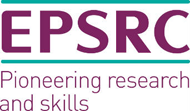Anthony Murphy
Anthony Murphy
Tony joined the CDT in September 2017, having previously completed a BSc in Physics with Biomedical Applications and an MSc in Materials Science for Innovative Engineers at Queen's University Belfast.
In Semester 1 of 2017-18 Tony completed a short exploratory research project at the University of Glasgow in Imaging magnetic structure in the electron microscope, supervised by Professor Stephen McVitie. In Semester 2 of 2017-18, he conducted a practical research project at Queen's University Belfast supervised by Professor Marty Gregg, Establishing Conduction in Thin Single Crystal Lamellae.
CDT PhD Project
ADVANCED MATERIALS FOR PHOTONIC INTEGRATION
Supervisors:
Professor Robert Bowman, Queen's University Belfast
Professor Marc Sorel, University of Glasgow
Plasmonic materials have attracted great interest for particularly in the last fifteen years and now that there are a few applications emergent. The use of conventional metals and alloys has seen plasmonics go as far as being commercialised. Newer applications in areas such as data storage or for implementations such as sensors in high temperature, hostile environments will require plasmonic components designed to deliver both performance and reliability that is hard to envisage with the current palette of materials.
A key step in identifying the suitability of new materials is their synthesis and testing of predicted performance. Given that many of the materials that have a suitable conductivity to be good plasmonic materials means that techniques such as UHV sputtering are used. However, when searching for new candidate systems – particularly beyond conventional metals and alloys a major impediment becomes the deposition targets themselves. It also becomes hard to create ternary and quaternary systems with sputtering as greater sensitivity to composition control dominates. Sputtering from a composite target is fraught with other issues. What is needed is a technique that employs deposition from a single composite target and can provide near perfect compositional transfer to a substrate. This allows a rapid cycling or testing of feasible compositions that means we can explore the potential plasmonic properties of new materials systems such novel oxides, heusler alloys etc and at different wavelength of interest.
Pulsed laser deposition is an excellent technique for rapid materials prototyping. Uniquely, the high power, ultra violet, short pulse laser delivers stoichiometric transfer, whereby the composition of a quite complicated alloy target (metallic or ceramic) is transferred across onto a substrate with relative ease whether in vacuum or in reactive gas environments. Allied to this is that target synthesis is cheap, easy and convenient due to lower dimensional tolerances required. The simplicity of technique and the energetics involved also eases the incorporation of other materials to aid creation of artificial structures and multilayers.
In this project, you will undertake a programme of advanced plasmonic materials synthesis and integration using pulsed laser deposition. A number strands will be explored; (i) exploration of novel oxides and heusler plasmonic materials, (ii) synthesis of refractive index high index materials for waveguiding along with the integration of plasmonic material and (iii) explore engineered layered metals for low-loss plasmonics where PLD is suited to creating metallic-dielectric multilayers.
We have two PLD systems, one is a fully automated wafer scale system the other mores suited to small samples. Both have multi-target carousels for deposition of several materials under one vacuum cycle and heated wafer stages to promote growth. Depending on the progress of the project there is the opportunity to get involved in some new equipment design/development as part of the industry engagement will be to explore developing a cluster-tool that brings a further deposition technique integrated to the PLD system to maximise materials processing capability.
The project would suit someone ambitious in novel materials synthesis who would also like the experience of some hand-on development and ownership of experimental equipment. You will get exposure and experience to materials characterisation too; optical, structural/chemical (FIB, SEM, XRD, TEM, EDX etc.).
This project is part of a Seagate Technology / Royal Academy of Engineering project led by Prof. Bowman. The student will join an existing team including a PDRA and benefit from a mentor being appointed at Seagate Technology. There is also the potential for the student will spend some time at Seagate understanding technical challenges of taking materials from lab to factory. It is also envisaged to add further industry partners to the project.





